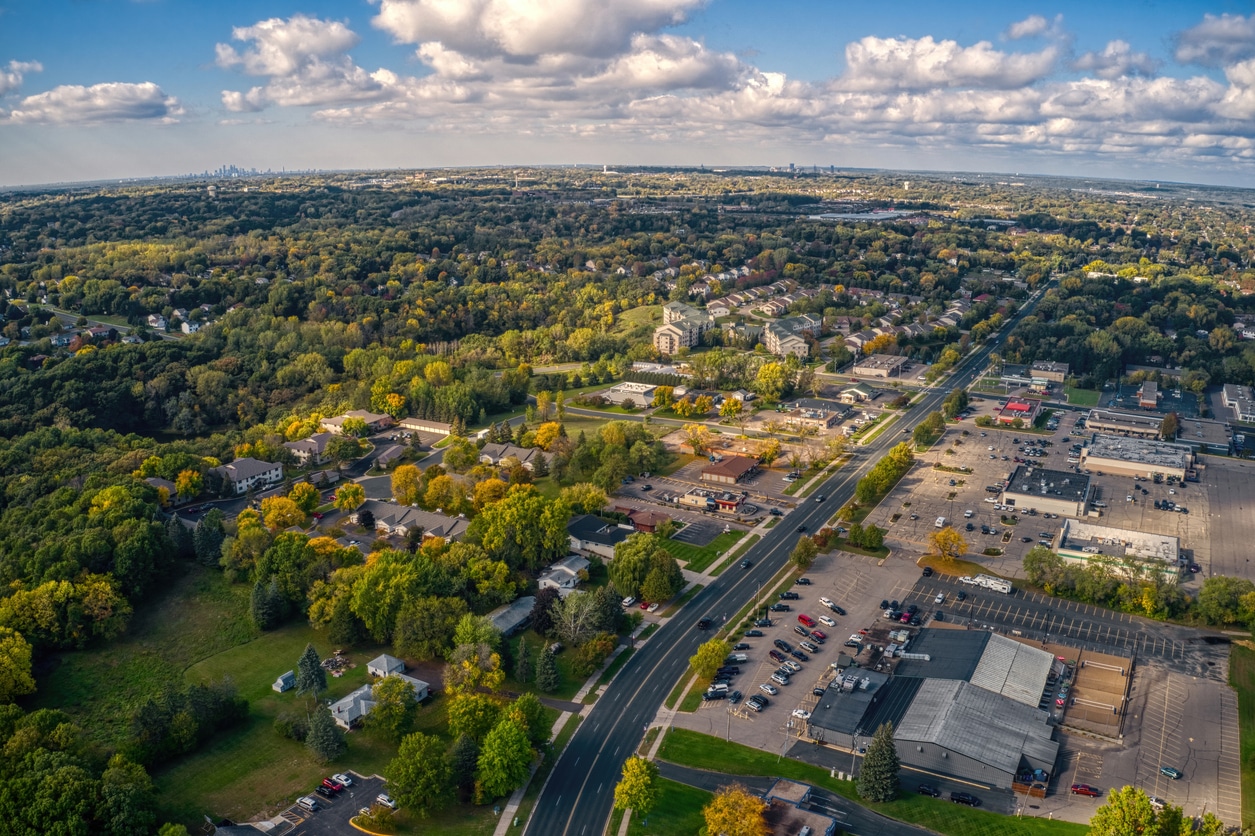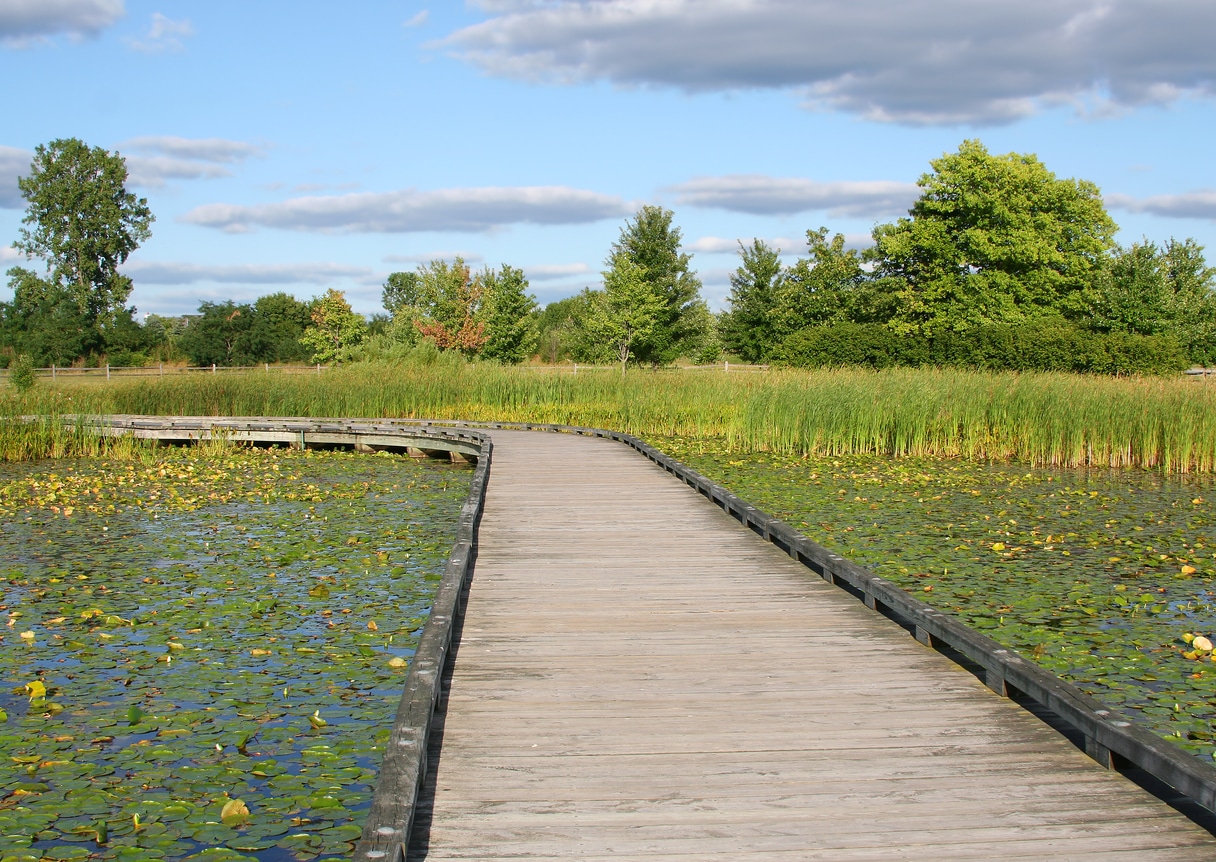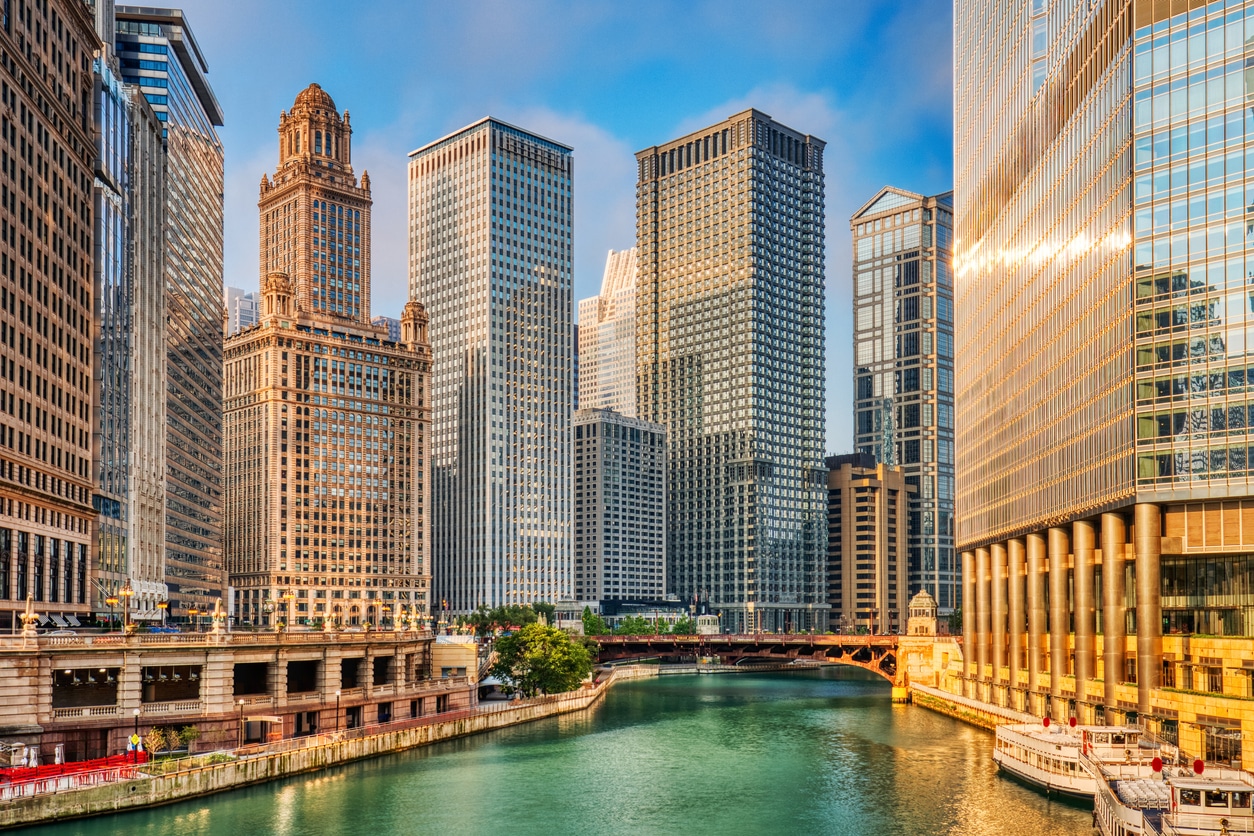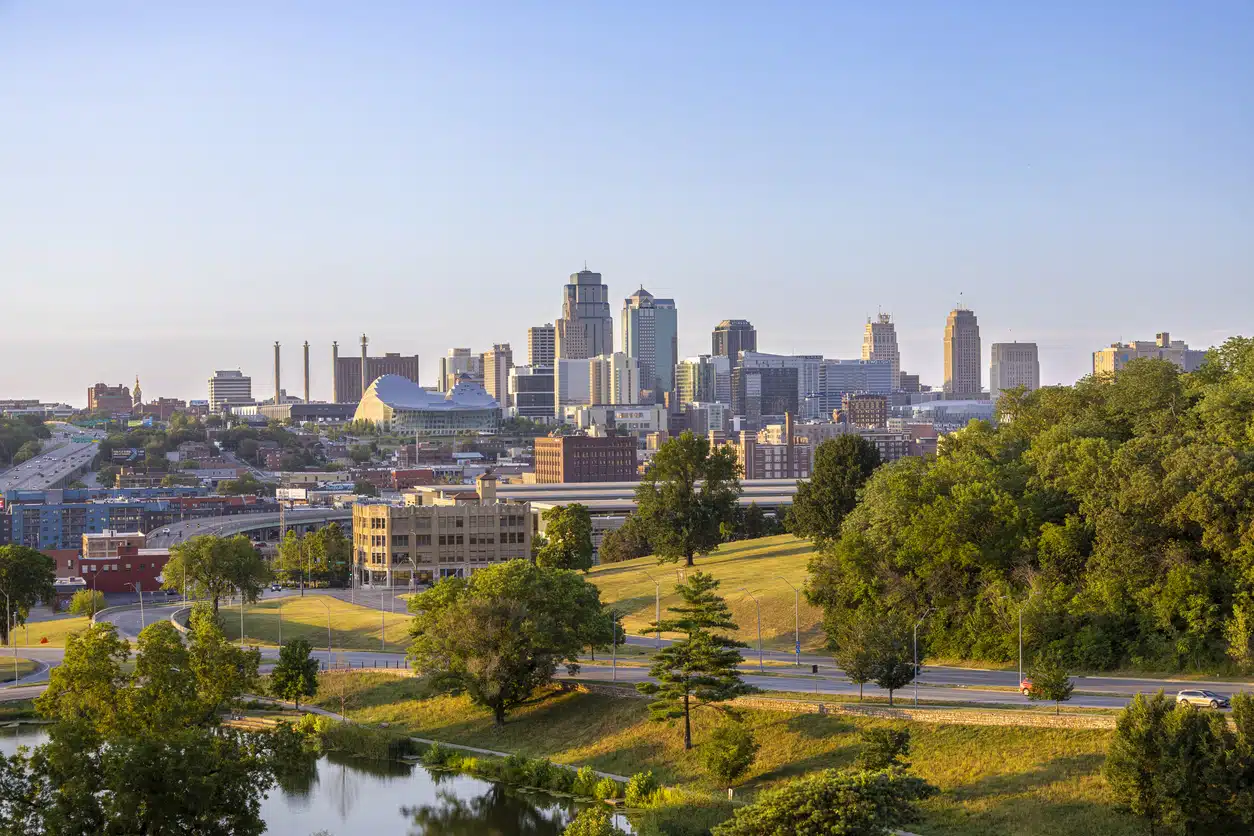From the dramatic skyscrapers of Chicago and the tranquil farmlands of Omaha, to the iconic BBQ of Kansas City and the waterfront views of Duluth, there’s so much to enjoy about living in the Midwest. This part of the country is known for its inspiring nature, charming towns, thrilling cities, and welcoming locals (it’s often called America’s Heartland, after all). But is living in the Midwest right for you — and what should know first before making the leap?
If you’re curious about starting a new chapter in this friendly region, join the club. In 2024 alone, the Midwest gained 410,000 new residents from across the U.S. and even internationally. This guide will cover what makes the Midwest such an inviting place to call home — from the weather and the job market, to the cost of living and the unique activities to do in the Midwest. So, start practicing your best “don’tcha know” and let’s jump in!
8 Things to Know About Living in the Midwest (Before Moving to the Midwest)
Do you plan on moving to Chicago for deep dish pizza, lakefront recreation, and a lively urban atmosphere? Or are your sights on Milwaukee for the cool industrial vibes, world-famous craft breweries, and summer music festivals? No matter where you put down roots in the Midwest, here’s what to keep in mind before you go.
Pro Tip: Want to make your Midwest transition as seamless as possible? Our handy moving checklist will help you navigate each step in the process smoothly. |
1)The cost of living in the Midwest is lower than other major U.S. hubs
When you think of moving to the Midwest, chances are, Chicago is the first city that comes to mind. And sure, the cost of living there is 16% above the national average, but it’s also not as steep as many other desirable cities in the U.S.
For instance, Chicago is 27% less expensive than New York City, 25% less than San Francisco, 20% less than Boston, 13% less than Seattle, and 10% less than Miami. To put this into further context, someone moving from New York will need about $7,265 per month in Chicago to afford the same lifestyle that cost them $11,000 per month in NYC.
But if Chicago isn’t your speed, other cities across the Midwest offer a reasonable cost of living, too. To name a few examples: Omaha is 8% below the national average, Minneapolis is 7% lower, St. Louis is 6% lower, Cincinnati is 4% lower, and Grand Rapids is 1% lower. This region also boasts some of the country’s lowest state income tax rates. Overall, if you’re looking for a more affordable quality of life, moving to the Midwest just makes sense.

2) The climate and weather in the Midwest gives you all four seasons
Almost all of the Midwest has a humid continental climate, with parts of southern Illinois and Indiana approaching a subtropical climate. The temperatures across this region fluctuate considerably from one season to the next.
Winters are cold, with temperature lows around 15 degrees, often accompanied by sleet, snow, or even blizzards. At the other end of this spectrum, summers are warm with intense humidity levels and temperatures around 85 degrees. Autumn ushers in crisp, sunny weather and vibrant colored foliage, while spring offers mild, breezy weather and sporadic rainfall.
Parts of the Midwest fall within what’s known as “Tornado Alley,” thanks to a phenomenon in the atmosphere called convection. This takes place when moist, warm air interacts with cool air, condensing into a vapor and creating winds that can spawn into thunderstorms or tornadoes.
These extreme weather events are most common in the summer months, but dangerous storms can occur at any time, so be aware of that before moving to the Midwest.
3) Living in the Midwest means exposure to a unique, specific lifestyle
What is the Midwestern lifestyle? Well, to sum it up: living in the Midwest is all about friendly communities, down-to-earth vibes, outdoor recreation, and neighbors who look after each other.
Combine this with an affordable cost of living and an authentic, hardworking mentality, and it’s easy to see how the Midwest earned its reputation as America’s Heartland. Here are some distinctive regional quirks that Midwesterners know to be true:
A Great Lakes vacation is just as fun (if not, more so) than a trip to the ocean.
College football fandom in the “Big Ten” conference is serious business.
“Pop” is the term for soda, “hotdish” is the term for casserole, and “Up North” is the catch-all description for lakefront getaways.
Any temperature above 50 degrees is acceptable T-shirt and shorts weather.
There’s a constant debate about pizza in this region — some locals swear by the classic deep dish-style crust from Chicago, while others prefer a thinner crust from St. Louis or a crispy, square crust from Detroit.
Ranch dressing is the official condiment of most Midwestern dinner tables.
You are not a real local until you’ve tried cheese curds and frozen custard from Culver’s.
Attending a state fair in the summer is an experience you need to have at least once.
From cards to cornhole, Midwesterners are always up for a competitive game night.
4) Midwest crime rates fluctuate significantly based on where you live
Crime in the Midwest is a mixed bag — as of 2025, Illinois, Ohio, Michigan, Missouri, and Indiana rank among states with the nation’s highest crime rates. On the other hand, Kansas, Wisconsin, Nebraska, Iowa, and both North and South Dakota have much lower crime rates.
Because it’s home to the Midwest’s largest metropolitan area, Illinois experiences the most crime in this region (254,782 in 2025), but it’s less than other states, like California (1,104,212), Texas (806,610), New York (428,313), and Florida (408,486). In fact, even Chicago has seen a historic drop in violent crime rates during 2025.
Here are the safest Midwestern cities and the cities where crime is more common. But as with anywhere else, most crimes are concentrated in small pockets within cities.
Safest cities in the Midwest
Carmel, Indiana
New Town, North Dakota
Campton Hills, Illinois
Novi, Michigan
Highest crime cities in the Midwest
St. Louis, Missouri
Minneapolis, Minnesota
Detroit, Michigan
Chicago, Illinois

5) The Midwest’s house and rental market is affordable — but on the rise
Living in the Midwest means that you won’t have to spend as much on housing as you would in other parts of the country. With that said, home values are starting to climb. Case in point: Recent data places three Midwestern cities among the top five U.S. metro areas where average home prices are currently rising the fastest.
Milwaukee has seen a 20% jump to $330,000 since 2024 — the nation’s largest increase in home values. Detroit and Cleveland are both right behind, with 12.5% and 10% boosts, respectively. These cities are still more affordable than the national average of $425,421, but it’s important to know that housing in some parts of the Midwest is more expensive than others.
On the pricier end, a house in Chicago costs around $402,000 on average, while on the lower end, a house in Duluth, Minnesota, costs $305,000 and a house in Omaha, Nebraska, costs $285,000. If you want to live in a large urban center, expect home values to increase. But if you’d rather live in a smaller area, buying a house will be cheaper.
Apartment rentals across the Midwest also vary from one state to the next. A one-bedroom apartment in most Midwestern states will set you back between $1,146–$1,615 per month — or about $1,350, on average. That’s cheaper than the national average of about $1,750 per month (with the exception of Illinois where the average rent clocks in around $2,030).
To use the same city comparisons from earlier: a one-bedroom apartment costs $2,435 per month in Chicago, $1,400 in Duluth, and $1,295 in Omaha.
6) Moving to the Midwest will open the door to an exciting job market
Although the Midwest’s unemployment rate is just above the national average (4.2% compared to 4.1%), this region has still experienced vibrant economic growth in recent years, with over 97,000 new jobs created as of mid-2025. The Midwest is a hub for numerous industries such as manufacturing, finance, aerospace, construction, agriculture, education, automotives, biotech, transportation, healthcare, and energy production.
It’s also home to Fortune 500 companies like Ford, General Motors, United Airlines, Nabisco, MacDonald’s, Best Buy, Motorola, and Allstate, just to name a few. The average annual salary in the Midwest is $69,416 — just above the national average of $66,622. Of course, you’ll earn more in major cities like Chicago, where the salary is about $83,000 on average. That’s less than New York City ($94,000), but still a competitive rate.

7) The best places to live in the Midwest are full of character and charm
There are 9,721 cities and towns across the Midwest, but out of all these locales, which is the right choice for you? Allow us to make that decision easier with our top three picks. Whether you prefer a cool urban vibe, a cozy small town feel, or a convenient slice of suburbia, this list has something for everyone.
Carmel, Indiana: Best for families
If you want a safe, kid-friendly home, look no further than Carmel. About 30 minutes north of Indianapolis, Carmel is known for its low crime rates, excellent public schools, and close-knit community atmosphere.
It also offers affordable housing and low unemployment rates — no wonder Carmel ranks among the five Best Places to Live in the U.S. This picturesque enclave is ideal for raising a family, thanks to over 200 miles of nature trails, 700 acres of outdoor parks, and a thumping Arts District with artisan boutiques, galleries, restaurants, street festivals, coffee shops, and live entertainment options for all ages.
Madison, Wisconsin: Best for young professionals
Looking for an authentic city experience without the price tag that comes with Chicago? Madison fits the bill. This urban center is full of youthful vibrancy and progressive, dynamic innovation, making it an ideal choice for young professionals.
Madison’s major claim to fame is the University of Wisconsin, home to one of the nation’s top 10 business programs. It also has an average walk score of 81 and a bike score of 82, so you can commute without a car. When you’re off the clock, Madison boasts a buzzy entertainment scene as well — including hip nightlife venues, music, theater, and outdoor activities.
Farmington, Missouri: Best for retirees
When it’s time to ease into those “golden years” of retirement, Farmington has you covered. This tranquil community is nestled in the Ozark Mountain foothills about an hour outside of St. Louis. Flanked by lush state parks, waterfront views, golf courses, vineyards, wineries, and microbreweries on Missouri’s scenic Route du Vin wine trail, Farmington offers the relaxed pace that retirees deserve.
You’ll also find a variety of affordable homes to choose from, as well as high-quality medical facilities such as Parkland Health Center. Bottom line: If you want a blend of recreation and comfort, Farmington is the place to be.
Pro Tip: Once you’ve picked a place to live in the Midwest, tap into our guide on how to pack for a move — it’s sure to make your relocation easier and more efficient. |

8) Whatever you’re into, the Midwest is brimming with entertainment
Now that you’ve settled on where you’ll be living in the Midwest, let’s discuss all the top-notch entertainment that awaits you here. From urban attractions to nature explorations and just about everything in between, here are some fun activities to do in the Midwest:
Cultural activities
Discover the historic Kansas City jazz scene at The Blue Room or Green Lady Lounge.
Peruse the vast collection of nearly 300,000 masterpieces at the Art Institute of Chicago.
Immerse yourself in Indigenous culture at Minnesota’s Pipestone National Monument.
Explore the roots of Motown and learn about civil rights heroes at The Wright Museum of African American History in Detroit.
Activities for kids
Spend an afternoon at the St. Louis Zoo and Forest Park (it’s free!).
Check out all the hands-on, interactive exhibits at the Indianapolis Children’s Museum.
Have a blast at the “roller coaster capitol of the world,” Cedar Point, in Sandusky, Ohio.
Experience Nickelodeon Universe, the nation’s largest indoor theme park, located in Minneapolis' iconic Mall of America.
Outdoor activities
Hike over 50 miles of trails or relax on a lakefront beach at Indiana Dunes National Park.
Marvel at the unique sandstone cliffs of Michigan’s Pictured Rock National Lakeshore.
Plan a canoeing excursion in the Boundary Waters Wilderness of northern Minnesota.
Ride your bike along the peaceful Missouri River through farmlands, wineries, and quaint small towns on Katy Trail.
Seasonal activities
Snag tickets to Summerfest, the world’s largest annual music festival, in Milwaukee.
Enjoy dachshund races, polka bands, beer, and bratwurst at Cincinnati’s Oktoberfest.
Hit the slopes with views of Lake Superior at Minnesota's Lutson Mountain Ski Resort.
Celebrate the arrival of spring with more than six million colorful new blooms at the Tulip Time Festival in Holland, Michigan.
Activities for a night out
Pair retro arcade games with modern craft cocktails at the 16-Bit Bar in Cleveland, Ohio.
Set out on an epic brewery crawl across the Twin Cities of Minneapolis and St. Paul.
Cheer on your favorite pro sports team in Chicago (there are nine to choose from!)
Laugh until your sides hurt at ComedySportz, an improv club in Milwaukee that thrives on audience interaction and participation.

Pros and Cons of Living in the Midwest
Is it worth living in the Midwest? Overall, the answer is yes. This region is full of laid-back character, warm community vibes, and a distinctive culture that sets the Midwest lifestyle apart from other areas in the U.S. But of course, with benefits come a few potential drawbacks, so here are some pros and cons to keep in mind about living in the Midwest.
Pros of living in the Midwest
Affordable cost of living
Friendly, welcoming locals
Mix of urban centers and small towns
Vibrant regional culture
Four distinct seasons
Robust job market
Close proximity to nature
Reasonable housing prices
Wide variety of entertainment options
Cons of living in the Midwest
Crime is high in some areas
Weather patterns can be extreme
Housing costs are on the rise
Start Your New Midwest Chapter with Colonial Van Lines
If you love the idea of an affordable cost of living, spectacular outdoor activities, and a unique lifestyle that won’t be found anywhere else — and the occasional tornado warning or winter storm doesn’t scare you off — then moving to the Midwest sounds is probably the right move for you.
When you’re ready to make the leap, let Colonial Van Lines take care of the details. With over 50 years of experience in long-distance moving, our team has all the expertise required to ensure a smooth transition to your new Midwestern home. Contact us for a free moving quote today!

